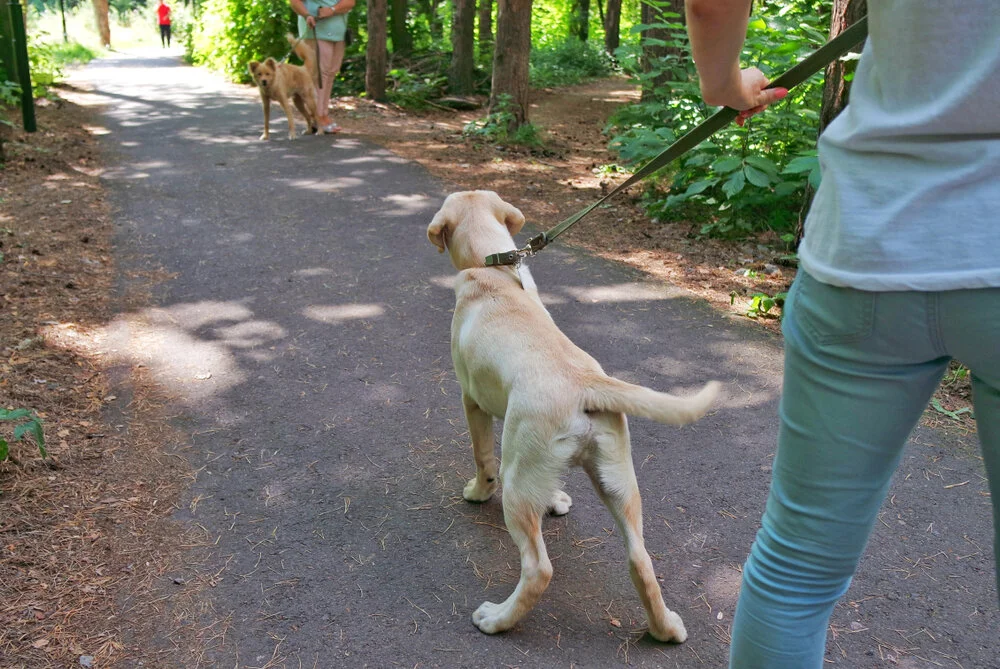By taking the time to understand our dogs and then properly introducing them, we can create better experiences for our canine companions.
The Why
Many people want their dogs to meet every dog they see on walks. What they don't understand is that this can be stressful for many dogs.
Just as we wouldn't appreciate random people coming into our personal space uninvited (especially if they're overexcited or pushy); many dogs don't like this, either.
When dogs are restrained on a leash, they can feel that they do not have the option to get away (‘Flight”) and go into their “Fight” response by growling, barking, and lunging to prevent another dog from invading their personal space when it's unwanted.
Even though they may mean well, many dog owners have not learned how to read their dogs' body language. By understanding what their dogs' actions are telling them, owners can use their dogs' leashes properly so they can communicate and advocate for their dogs to help them avoid stressful situations.
When it comes to introductions to other dogs, it's best to take the time to have proper dog-to-dog meetings and take everything slowly, listening to what both dogs are telling us,
The signs
Understanding your dog's body language is one of the most important things we as humans can do to help them.
Dogs can't tell us in words what they're thinking. That's why it's so important to understand their body language better. Once you can read your dog's body language, a whole world of communication opens up and both you and your dog can have a better relationship.
It's important to understand that dogs have 4 responses to any stressful situation: fight, flight, avoid, and acceptance. We ask so much of our canine companions. Help them feel safer and more secure by guiding, protecting, and teaching them during these stressful times.
The Walk
We start on a wide street/sidewalk with an “outside parallel walk”, where both dogs have enough space to feel comfortable.
Have each dog on the outside of its human, not pulling or trying to get at the other dog.
Let both dogs get into a nice rhythm walking, and if all goes well then move to an “inside parallel walk” where having both dogs walk on the inside of the humans but still enough space in between each dog.
As long as this is going well, move on to the next step which is “The Sniff”, read more about that below.
If you see either dog is uncomfortable, stop and try another day, there is no rush.
The Sniff
Dogs sense of smell is 10,000 to 100,000 times better than ours. This enables them to learn so many things about each other by simply sniffing another dog’s rear end.
The scents are especially potent around the genitals and anus area, which can tell another dog about their gender, reproductive status, diet, health status, and even temperament. It's how dogs first get to know each other and helps them choose how to behave,
We want t0 let them "sniff it out”, but not create that “awkward handshake” by staying there too long. Some dogs may get too intense with their sniffing, and the other dogs may need their personal space.
It’s imperative to watch for their signs of stress or appeasement as shown in the body language video.
The Relaxation
After both dogs have been given the opportunity to have a sniff, then let them relax near each other, but it’s not time to play.
Let them both take a break and learn to be calm in the presence of each other.
If the dogs have enough obedience, ask them to lay down, If not wait patiently until both dogs relax and lay down. If both or one of the dogs is overexcited, then continue the parallel walk.
If you see either dog is uncomfortable, stop and try another day, there is no rush.
The Play
Here is the fun part and the most anxious ones for many dog owners.
Before bringing the dogs into a backyard or home, all toys, food, and water should be removed. If possible a backyard is preferred, but a living room with enough space for the dogs to run around and play can work, depending on the size of the dog compared to the living room or backyard.
Bring both dogs on a leash inside, giving each other space. Many dogs can act differently inside their home, especially if it’s in the living room. Depending on the dogs and situation, remove leashes or let them drag it, all training collars and or head halters should be off as well.
Watch for equal play, and any avoidance or appeasement signals, be proactive, interrupt and advocate for both dogs throughout their play session.
If you are unsure, please work with a trainer to help guide you before attempting this stage.
Here is an instructional video to help set you and your dog up for success,
The video above is from a combined training session with Korean K9 Rescue Alums Finn and Azu. The goal was to do a proper dog to dog introduction,
After this training session Finn and Azu continue to be best friends. Azu has since had other successful introductions and his humans recently adopted another dog into their family with Azu’s overjoyed approval.
This is the process I use and hope our video and guide can help others learn how to have proper dog to dog introductions.
If you are in Brooklyn NY, I would be glad to help you and your dog live better lives together.
In other areas, please find a local trainer, it will make all the difference in the world.






